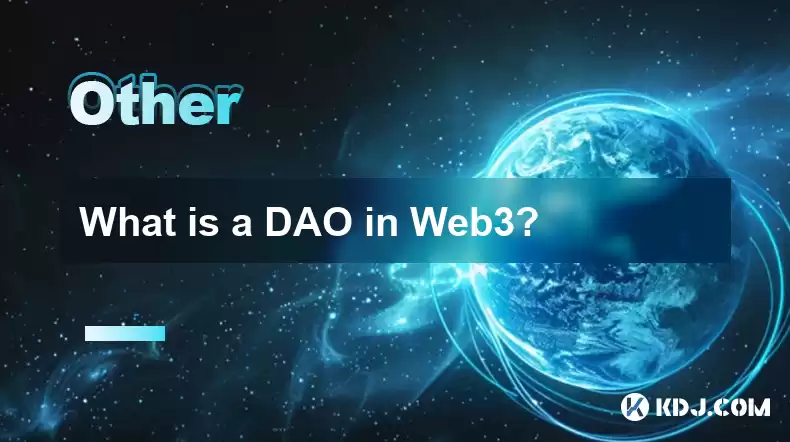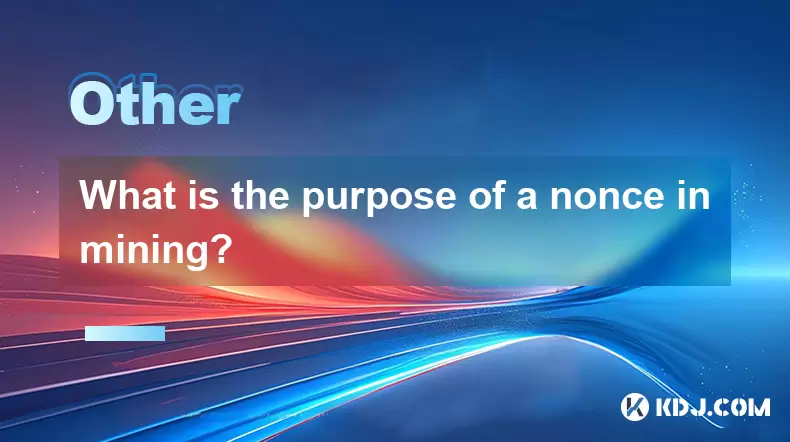-
 Bitcoin
Bitcoin $114400
0.68% -
 Ethereum
Ethereum $3550
2.48% -
 XRP
XRP $3.001
4.99% -
 Tether USDt
Tether USDt $0.9999
0.01% -
 BNB
BNB $757.6
1.46% -
 Solana
Solana $162.9
1.07% -
 USDC
USDC $0.9998
0.00% -
 TRON
TRON $0.3294
0.91% -
 Dogecoin
Dogecoin $0.2015
2.46% -
 Cardano
Cardano $0.7379
2.01% -
 Stellar
Stellar $0.4141
8.83% -
 Hyperliquid
Hyperliquid $37.83
-1.91% -
 Sui
Sui $3.454
0.76% -
 Chainlink
Chainlink $16.62
3.53% -
 Bitcoin Cash
Bitcoin Cash $554.6
2.84% -
 Hedera
Hedera $0.2486
3.91% -
 Ethena USDe
Ethena USDe $1.001
0.00% -
 Avalanche
Avalanche $21.95
3.34% -
 Toncoin
Toncoin $3.563
-2.85% -
 Litecoin
Litecoin $112.7
2.65% -
 UNUS SED LEO
UNUS SED LEO $8.977
0.13% -
 Shiba Inu
Shiba Inu $0.00001232
1.85% -
 Uniswap
Uniswap $9.319
2.93% -
 Polkadot
Polkadot $3.632
1.38% -
 Monero
Monero $307.2
2.36% -
 Dai
Dai $0.9997
-0.03% -
 Bitget Token
Bitget Token $4.340
0.91% -
 Pepe
Pepe $0.00001048
1.07% -
 Cronos
Cronos $0.1348
3.26% -
 Aave
Aave $261.5
1.93%
What is a DAO in Web3?
DAOs (Decentralized Autonomous Organizations) embody Web3's principles by operating on blockchain technology, fostering transparency, inclusivity, and decentralized decision-making in various organizational endeavors.
Feb 16, 2025 at 05:18 pm

Key Points:
- Definition and Concept of DAO
- Benefits and Advantages of DAOs
- Functions and Features of DAOs
- Governance Structures and Decision-Making Processes
- Creation and Participation in DAOs
- Challenges and Limitations of DAOs
- Examples and Case Studies of Successful DAOs
What is a DAO in Web3?
A Decentralized Autonomous Organization (DAO) is a digital entity that operates on the principles of blockchain technology and embodies core tenets of Web3. DAOs are communities driven by a shared mission, often focused on governance, investment, and the provision of public goods or services.
Benefits and Advantages of DAOs:
- Decentralization and Autonomy: Unlike traditional organizations, DAOs operate without a central authority or hierarchy, enabling decision-making power to be distributed among its members.
- Transparency and Accountability: Transactions and decision-making processes are recorded on an immutable blockchain, providing transparency and traceability.
- Inclusivity and Accessibility: Membership in DAOs is typically open to all interested individuals, fostering wider participation and diversity of perspectives.
- Efficiency and Cost-Effectiveness: Automating processes reduces administrative and operational expenses, enhancing efficiency and cost optimization.
- Innovation and Adaptability: DAOs can rapidly evolve and adapt to changing circumstances or market demands due to their decentralized nature.
Functions and Features of DAOs:
- Governance and Decision-Making: DAOs establish rules and systems for governance, enabling members to vote on proposals, allocate funds, and make strategic decisions.
- Treasury Management and Investment: DAOs can receive and hold assets, manage treasuries, and invest in opportunities aligned with their mission and objectives.
- Collaboration and Resource Sharing: DAOs provide platforms for members to collaborate, share resources, and pool knowledge and expertise.
- Reward Distribution and Incentive Mechanisms: DAOs often implement tokenized incentives or reward mechanisms to encourage active participation and contributions.
- Community Building and Social Impact: DAOs foster a sense of community and enable members to contribute to social, environmental, or charitable initiatives.
Governance Structures and Decision-Making Processes:
- On-Chain Voting: Proposals and decisions are voted on directly through blockchain-based smart contracts, ensuring transparency and tamper resistance.
- Delegated Voting: Members can delegate their voting power to representatives or committees to streamline decision-making processes.
- Governance Tokens: Governance tokens confer voting rights and influence on decision-making, incentivizing participation and commitment.
- Consensus Mechanisms: DAOs implement consensus mechanisms such as Proof-of-Work or Proof-of-Stake to reach agreement on decisions while avoiding malicious or fraudulent activities.
Creation and Participation in DAOs:
- Formation: DAOs can be established by individuals or groups who define the mission, rules, and governance structure.
- Community Building: Members are recruited and engaged through social media platforms, forums, or dedicated interfaces.
- Token Distribution: Governance tokens may be distributed through token sales, airdrops, or community contributions.
- Participation Channels: Members can interact and participate in DAOs through online platforms, Discord servers, or other communication channels.
Challenges and Limitations of DAOs:
- Technical Complexity: Implementing and managing DAOs requires a certain level of technical expertise, which may limit accessibility for some users.
- Legal Uncertainties: The legal status and regulatory landscape for DAOs vary across jurisdictions, posing potential compliance challenges.
- Potential for Collusion or Malicious Actors: Decentralized decision-making structures can be vulnerable to collusion, manipulation, or malicious activities.
- Scalability and Performance: As DAOs grow in size and complexity, scalability and performance issues may arise, affecting operational efficiency.
- Security Risks: DAOs may be exposed to security vulnerabilities, such as hacking, phishing, or smart contract exploits.
Examples and Case Studies of Successful DAOs:
- MakerDAO: A decentralized lending platform powered by the Maker Protocol, showcasing the use of DAOs in financial services.
- Uniswap: A decentralized exchange enabling peer-to-peer trading of crypto assets, exemplifying the role of DAOs in decentralized finance.
- Bored Ape Yacht Club (BAYC): A collection of non-fungible tokens (NFTs) operated as a DAO, demonstrating the application of DAOs in digital art and collectibles.
- Decentraland: A virtual world and metaverse platform owned by a DAO, offering a glimpse into the future of decentralized virtual communities.
- Gitcoin: A platform that enables open-source software development through decentralized funding, showcasing the impact of DAOs in supporting innovation.
FAQs:
- What is the future of DAOs?
DAOs are rapidly evolving and gaining traction as a new paradigm for organizational governance and community building. They offer the potential to revolutionize various industries, from finance and technology to social impact and online communities.
- How do I join a DAO?
Joining a DAO typically involves visiting its website or social media platforms, learning about its mission and objectives, and understanding the membership criteria. Some DAOs require applicants to go through a vetting process or hold governance tokens.
- What are the benefits of participating in a DAO?
Participating in a DAO offers opportunities for community building, contributing to shared goals, and potentially earning rewards or incentives. It also allows individuals to shape the direction and decision-making processes of a decentralized organization.
- What are the risks of participating in a DAO?
Risks of participating in a DAO include potential loss of funds or digital assets if the DAO faces security breaches or exploits. There may also be reputational risks associated with involvement in a DAO if it engages in unethical or controversial activities.
Disclaimer:info@kdj.com
The information provided is not trading advice. kdj.com does not assume any responsibility for any investments made based on the information provided in this article. Cryptocurrencies are highly volatile and it is highly recommended that you invest with caution after thorough research!
If you believe that the content used on this website infringes your copyright, please contact us immediately (info@kdj.com) and we will delete it promptly.
- Cryptocurrency, Altcoins, and Profit Potential: Navigating the Wild West
- 2025-08-04 14:50:11
- Blue Gold & Crypto: Investing Disruption in Precious Metals
- 2025-08-04 14:30:11
- Japan, Metaplanet, and Bitcoin Acquisition: A New Era of Corporate Treasury?
- 2025-08-04 14:30:11
- Coinbase's Buy Rating & Bitcoin's Bold Future: A Canaccord Genuity Perspective
- 2025-08-04 14:50:11
- Coinbase's Buy Rating Maintained by Rosenblatt Securities: A Deep Dive
- 2025-08-04 14:55:11
- Cryptos, Strategic Choices, High Returns: Navigating the Meme Coin Mania
- 2025-08-04 14:55:11
Related knowledge

What is the purpose of a nonce in mining?
Aug 04,2025 at 05:56pm
Understanding the Role of a Nonce in Cryptocurrency MiningIn the world of cryptocurrency mining, the term nonce stands for 'number used only once.' Th...

What is the difference between on-chain and off-chain transactions?
Aug 02,2025 at 04:22pm
Understanding On-Chain TransactionsOn-chain transactions refer to digital asset transfers that are recorded directly on a blockchain ledger. These tra...

How are blocks linked together?
Aug 04,2025 at 06:56am
Understanding the Structure of a BlockchainA blockchain is a decentralized digital ledger composed of a sequence of blocks, each containing a list of ...

What is a node's role in a blockchain network?
Aug 03,2025 at 03:16pm
Understanding the Function of a Node in a Blockchain NetworkA node is a fundamental component of any blockchain network, acting as a participant that ...

How are transactions verified on a blockchain?
Aug 04,2025 at 12:35am
Understanding the Role of Nodes in Transaction VerificationIn a blockchain network, nodes are fundamental components responsible for maintaining the i...

What is the double-spending problem and how does blockchain prevent it?
Aug 02,2025 at 01:07pm
Understanding the Double-Spending ProblemThe double-spending problem is a fundamental challenge in digital currency systems where the same digital tok...

What is the purpose of a nonce in mining?
Aug 04,2025 at 05:56pm
Understanding the Role of a Nonce in Cryptocurrency MiningIn the world of cryptocurrency mining, the term nonce stands for 'number used only once.' Th...

What is the difference between on-chain and off-chain transactions?
Aug 02,2025 at 04:22pm
Understanding On-Chain TransactionsOn-chain transactions refer to digital asset transfers that are recorded directly on a blockchain ledger. These tra...

How are blocks linked together?
Aug 04,2025 at 06:56am
Understanding the Structure of a BlockchainA blockchain is a decentralized digital ledger composed of a sequence of blocks, each containing a list of ...

What is a node's role in a blockchain network?
Aug 03,2025 at 03:16pm
Understanding the Function of a Node in a Blockchain NetworkA node is a fundamental component of any blockchain network, acting as a participant that ...

How are transactions verified on a blockchain?
Aug 04,2025 at 12:35am
Understanding the Role of Nodes in Transaction VerificationIn a blockchain network, nodes are fundamental components responsible for maintaining the i...

What is the double-spending problem and how does blockchain prevent it?
Aug 02,2025 at 01:07pm
Understanding the Double-Spending ProblemThe double-spending problem is a fundamental challenge in digital currency systems where the same digital tok...
See all articles

























































































